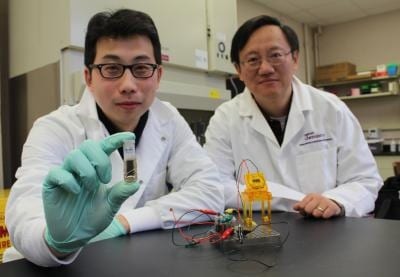A new “sugar battery” possessing an “unmatched” energy density has been created by a research team from Virginia Tech. The researchers think that their new battery — which, it bears repeating, runs on sugar — could potentially replace conventional forms of battery technology within only the next couple of years.
The researchers argue that their sugar batteries’ relative affordability, ability to be refilled, and biodegradability, are significant advantages as compared to current battery technologies, and should give it the edge in competition. They are currently aiming for the technology to hit the market sometime within the next few years.
“Sugar is a perfect energy storage compound in nature,” stated researcher YH Percival Zhang, an associate professor of biological systems engineering in the College of Agriculture and Life Sciences and the College of Engineering. “So it’s only logical that we try to harness this natural power in an environmentally friendly way to produce a battery.”
While sugar batteries aren’t an entirely new concept, they have never been all that viable either — the new technology, though, is different, possessing an “energy density an order of magnitude higher than others,” according to Zhang. Continuing: “Sugar is a perfect energy storage compound in nature. So it’s only logical that we try to harness this natural power in an environmentally friendly way to produce a battery.”
Virginia Tech provides more:
This is one of Zhang’s many successes in the last year that utilize a series of enzymes mixed together in combinations not found in nature. In this newest development, Zhang and his colleagues constructed a non-natural synthetic enzymatic pathway that strip all charge potentials from the sugar to generate electricity in an enzymatic fuel cell. Then, low-cost biocatalyst enzymes are used as catalyst instead of costly platinum, which is typically used in conventional batteries.
Like all fuel cells, the sugar battery combines fuel — in this case, maltodextrin, a polysaccharide made from partial hydrolysis of starch — with air to generate electricity and water as the main byproducts.
“We are releasing all electron charges stored in the sugar solution slowly step-by-step by using an enzyme cascade,” Zhang explained. “Different from hydrogen fuel cells and direct methanol fuel cells, the fuel sugar solution is neither explosive nor flammable and has a higher energy storage density. The enzymes and fuels used to build the device are biodegradable. The battery is also refillable and sugar can be added to it much like filling a printer cartridge with ink.”
Source: Clean Technica. Reproduced with permission.










